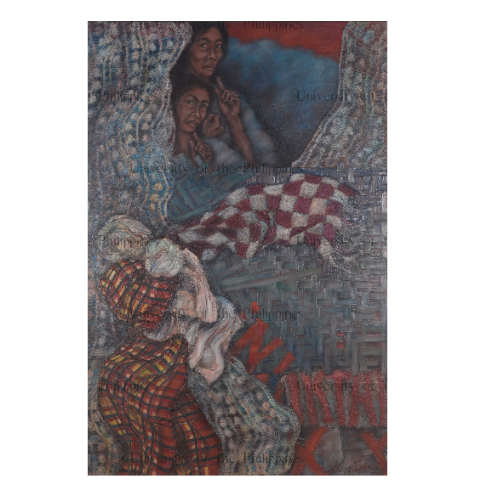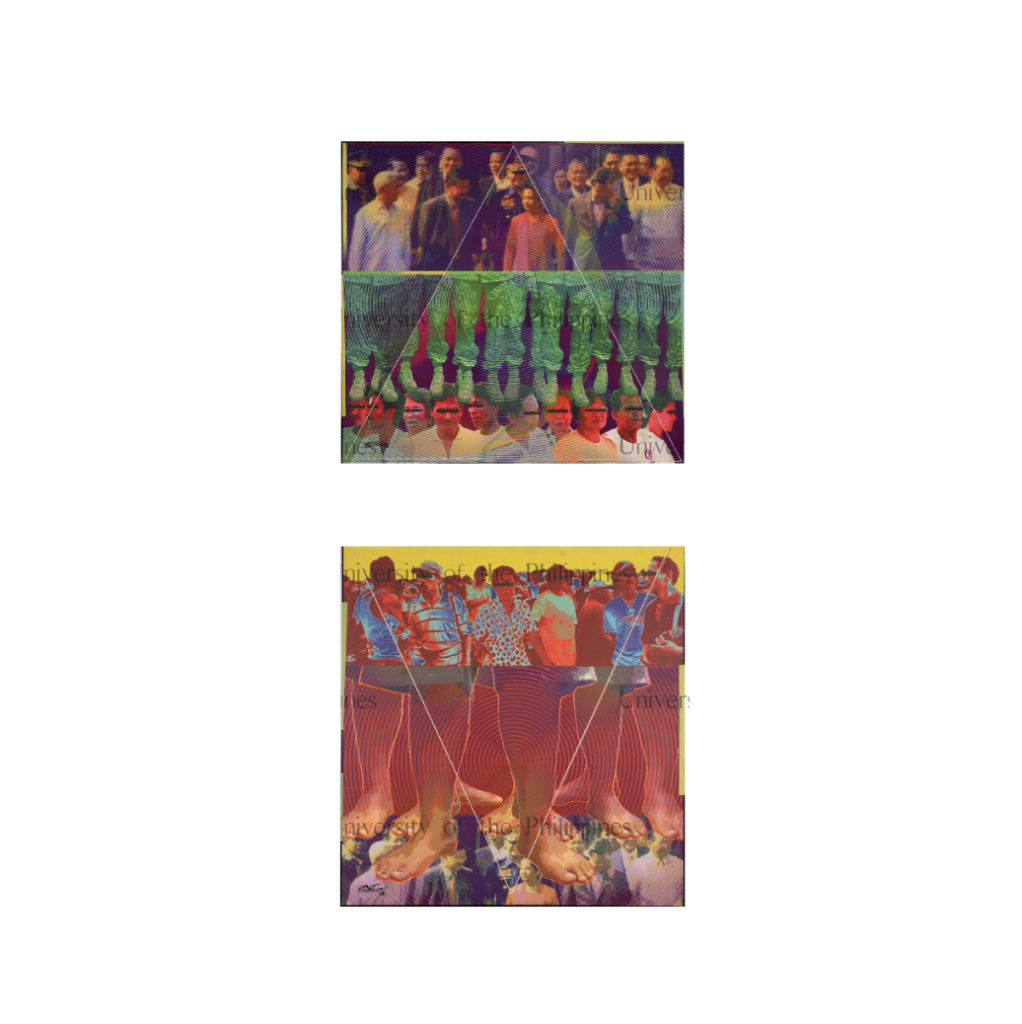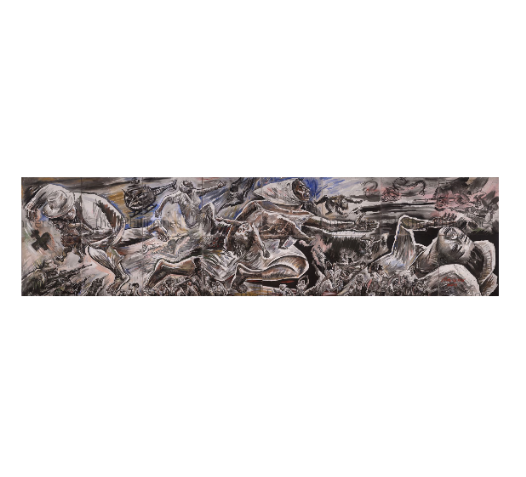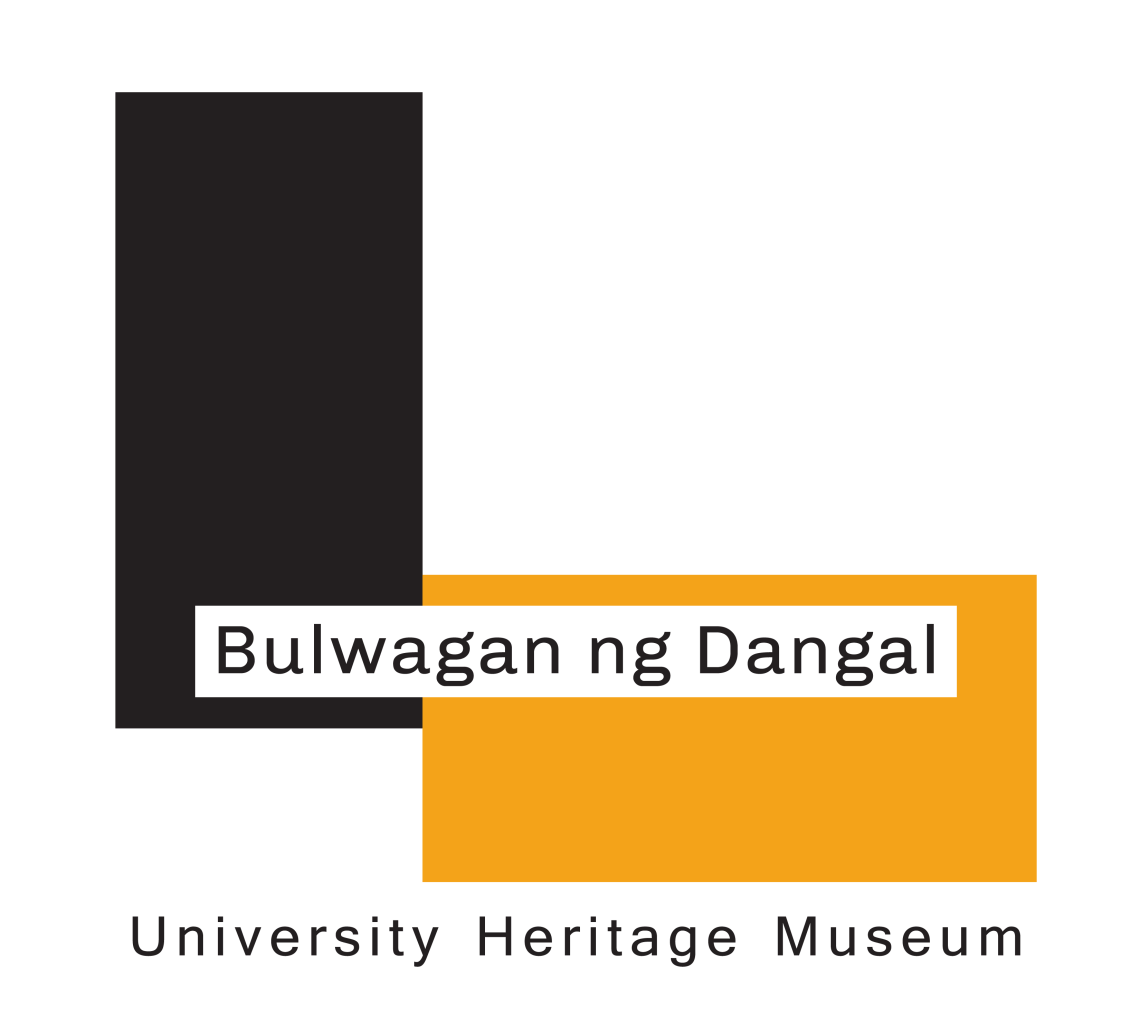(Written by Merselle Montes for the culminating coffee table book of the University Collection Mapping Project (2017-2020), entitled “Adhika: Vision & Legacy – The University of the Philippines Diliman Collections,” published by the UPD Office for Initiatives in Culture and the Arts)
The Bulwagan ng Dangal University Heritage Museum was established in 2009 during the University’s centennial celebration. It was created as a university art space for the University Art Collection. Taking its name from a line in the university anthem, UP Naming Mahal, the Bulwagan serves as a living tribute to UP Heritage. It showcases the artistic excellence of the University’s homegrown artists and provides a space where creative experimentation and interdisciplinary conversations can take place. Much like the university hymn, the museum captures the UP spirit, articulating it in novel ways to the academic community and various publics.

Early exhibitions at the Bulwagan ng Dangal included select art works from the University Art Collection. The museum’s holdings expanded significantly in 2011 when Prof. Ruben Defeo issued an open call for art donations from the University’s alumni and professors during his term as the museum’s curator. Since then, the Bulwagan has acquired 119 art works in its permanent collection, including paintings, sketches, prints, sculptures, and installations, spanning multiple time periods and genres. Among the most valuable artworks in the collection are those of National Artists Napoleon Abueva, Benedicto Cabrera, Abdulmari Asia Imao, and Jose Joya Jr., such as Cabrera’s Variations of Sabel (2014) and Imao’s Sarimanok Series (2007 & 2013). The museum also has a notable selection of social realist works such as Pablo Baen Santos’ IR (Internal Refugees) (1989), Imelda Cajipe-Endaya’s Inay, Ineng, Kalayaan ay Inyo Rin (1985), and Leonilo Doloricon’s Tatsulok (2008) and Baliktarin ang Tatsulok (2008). Furthermore, the collection includes artworks created during A Day with UP Artists, a drawing session organized during the Diliman Month in 2014. This event brought together thirty visual artists to the Bulwagan ng Dangal. Aside from the permanent collection, the museum also houses several pieces loaned from private collections, such as the functional wood sculptures of Jerusalino Araos.
The Bulwagan ng Dangal regularly organizes exhibitions that highlight the history and landmarks of the national university. Its inaugural show, Pag-asa ng Bayan, presented the history of the University with objects from the University Art Collection depicting significant people and events, showing portraits of past UP presidents, busts of national heroes, paintings from different colleges, and well-loved pieces of public art. In 2010 the museum, together with various UP offices, organized a two-fold exhibition that presented the UP Diliman campus as a model of architectural excellence. Diliman: Tracing the Terrain illustrated the development of the campus through archival photos and architectural plans; while Monochromed Memories: UP Landmarks memorialized the declaration of the University as the country’s national university through a series of commissioned art works depicting various campus landmarks, including Palma Hall, Melchor Hall, Malcolm Hall, and the Oblation.

Demonstrating the dynamic nature of the collection, the museum has also exhibited various reinterpretations of its holdings. The 2016 show, Tao at Tahan: Citizen Refugees, Contentious Histories, utilized the Bulwagan’s rich collection of social realist works to focus on the struggles of our displaced Filipinos. The 2017 exhibition, Resonance and Transformation, presented the works of National Artists as a study in the transformation of the artistic style of Filipino artists.
In 2017, the Bulwagan ng Dangal was host to exhibitions of some of the University’s most renowned artists, including: the centennial celebrations Maceda100: reading Maceda, Prelude, a tribute to National Artist for Music Jose Maceda organized by the UP Center for Ethnomusicology; and, A Man and His Relations, a retrospective on National Artist for Painting Cesar Legaspi curated by Claro Ramirez and Eileen Legaspi-Ramirez.
In an effort to make its collection more accessible to the UP community, the Bulwagan ng Dangal lends works from the collection to various colleges and units inside the University. These works can be found in university offices, lobbies, and work spaces often visited by the public.

The museum intends to refine its acquisition program based on the development of a collection management policy. The collection is fully catalogued, with condition reports accomplished for a significant number of works. The Bulwagan ng Dangal is also currently planning the digitization of its records to streamline its collection management system.
The Bulwagan ng Dangal serves as a creative laboratory to students of art studies, fine arts, and interior design who want to gain a better understanding of museum practices and the curatorial process. More than a repository of the University’s artistic treasures, it allows for numerous disciplines to converge, providing a space where students, professors, researchers, artists, and cultural workers can explore new concepts and collaborate on specific thematic projects. The interdisciplinary mandate is fulfilled through exhibitions and programs organized in cooperation with different departments and institutions within and beyond the University. Exhibits include: Batang Lumad: Children of the Soil (February-March 2016) curated by Aba Lluch Dalena and Lina Zacher; Sulyap sa Baro at Saya: Silayan ang Kola de Saya (June-September 2011), and Fast Fashion: The Dark Side of Fashion (October-November 2016) organized by the UP College of Home Economics; and, Anthro 100: Sandaang Taon ng Aghamtao sa Pilipinas/100 Years of Philippine Anthropology (October-November 2017) organized by the UP Department of Anthropology. The museum also hosted the mock up exhibition for Muhon: Traces of an Adolescent City, the official entry of the Philippines in the Venice Architecture Biennale 2016 for the country’s first ever participation in the event. Lastly, the museum hosted Lupang Hinirang: Mga Kuwento ng Pagsasalugar ng UP Diliman, an exhibit which explored the concept of place-making in the university, as part of the UP Diliman Arts and Culture month in February 2019.
The Bulwagan ng Dangal fosters new ideas and practices that can open new perspectives, allowing its publics to better respond to the current issues of society.
